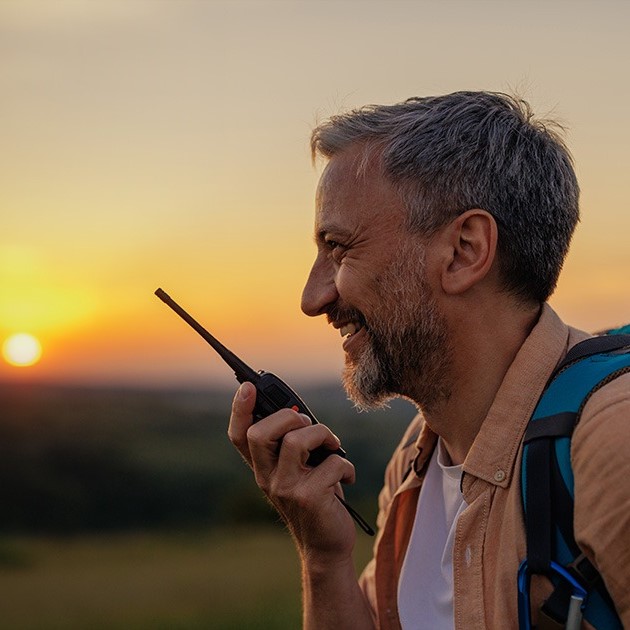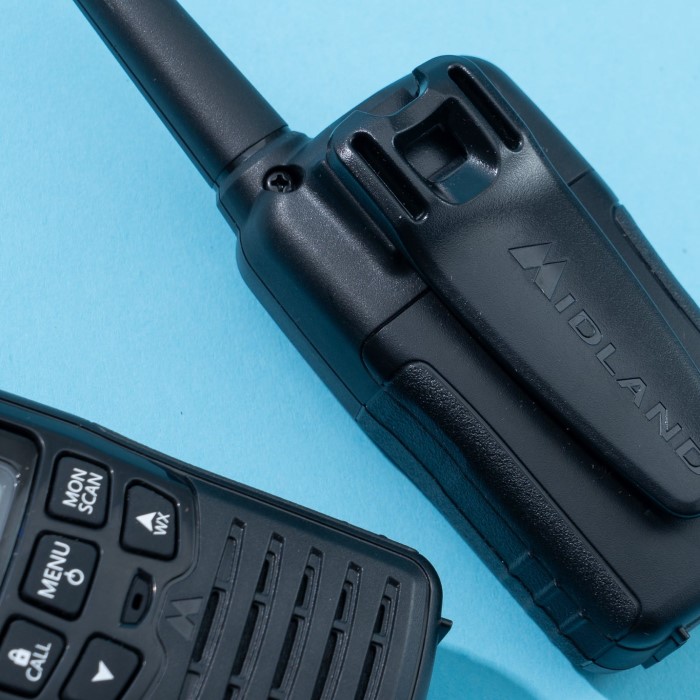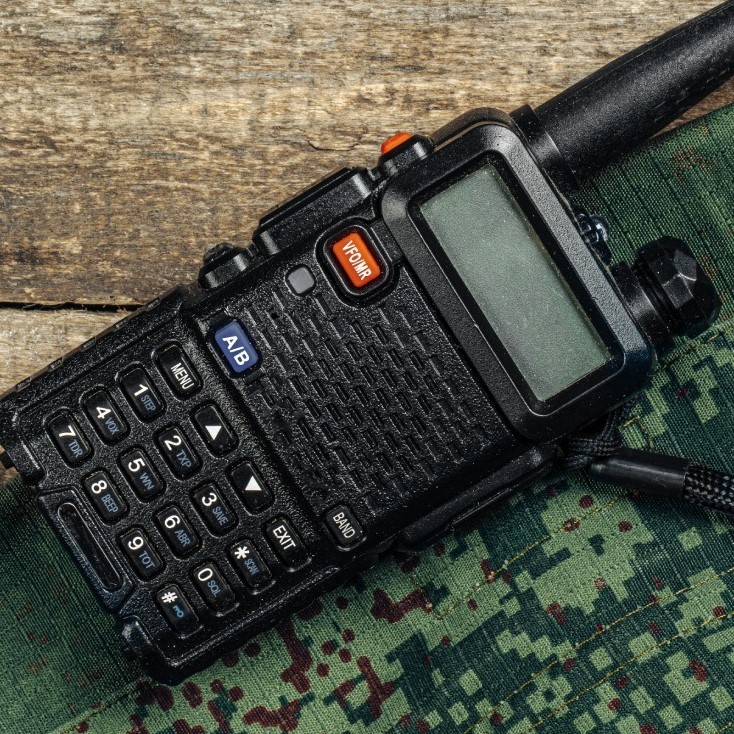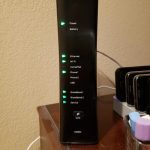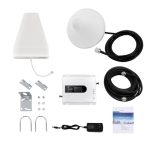Contents
Introduction
What is Walkie Talkie Range?
Walkie talkie range refers to the maximum distance over which two devices can communicate. It varies depending on the model, environment, and conditions. Manufacturers often state an ideal range under perfect conditions. How far do walkie talkies reach? In real-world settings, this range is usually reduced due to obstacles, terrain, or signal interference. Range helps users determine the usability of devices for specific tasks or environments.
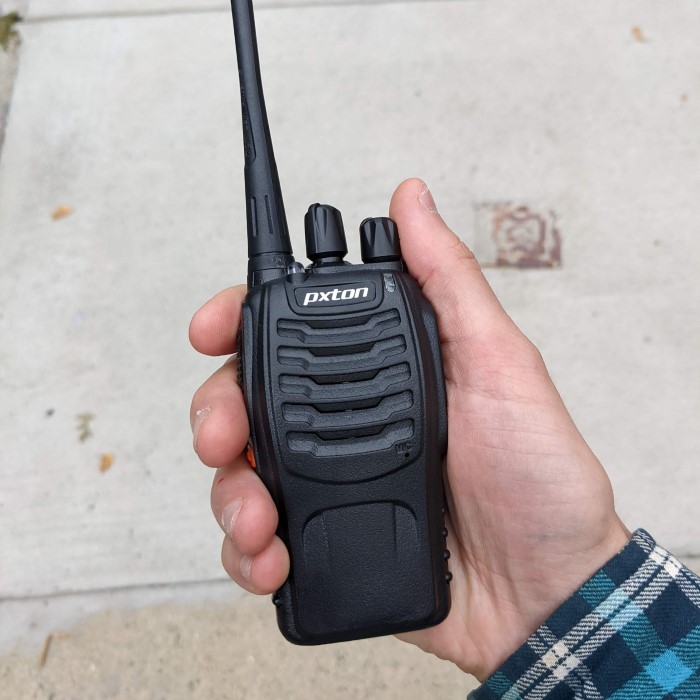
Importance of Understanding Range for Effective Communication
1. Importance of Knowing the Range:
- Understanding the range of a walkie talkie is fundamental to selecting the right device for specific communication needs.
- Each model of walkie talkie comes with a rated range, which indicates the maximum distance over which it can maintain a clear signal.
- By assessing your communication needs, you can match the appropriate walkie talkie to your expected usage scenario, preventing potential issues later on.
2. Ensuring Clear and Reliable Communication:
- A thorough understanding of range helps ensure that users can communicate effectively without unexpected signal loss.
- Clear communication is essential in various circumstances, such as family outings, professional settings, and emergency situations.
- Knowing the effective range allows users to establish realistic expectations and minimizes frustrations that can arise from poor connectivity.
3. Significance for Specific Users:
- For emergency responders, having reliable communication over the necessary range can be vital for coordinating operations and ensuring safety during emergency situations.
- Outdoor enthusiasts, such as hikers or campers, benefit from understanding the range of their devices to avoid being cut off from their group in remote areas.
- Event organizers need to select walkie talkies with adequate range to ensure seamless communication throughout large venues or crowded events.
Factors Affecting Walkie Talkie Range
Walkie talkie range is influenced by multiple conditions and factors. Understanding these can help maximize performance. From terrain types to signal characteristics, these variables determine device effectiveness in different environments.
Terrain and Obstacles
The terrain plays a major role in walkie talkie range. Open areas offer better signals. Mountains, dense forests, and buildings hinder communication. Obstacles like walls reduce range in urban settings. For best results, use walkie talkies in clear, unobstructed locations.
Frequency and Signal Type
Radio frequency affects how far walkie talkies reach. UHF signals work better indoors or in crowded areas. VHF signals are ideal for open fields and longer distances. Choosing the right signal type ensures maximum efficiency based on use location.
Power Output and Battery Strength
Higher power output improves walkie talkie range. Devices with strong batteries also extend communication ability. Low battery reduces signal strength and range. Always ensure fully charged devices for consistent performance.
Weather Conditions and Atmospheric Interference
Weather like rain or fog can affect range. Atmospheric conditions such as solar activity impact signals. Humid air may lower effectiveness. Understanding weather patterns helps prepare for changes in communication reliability.
Maximum Range of Walkie Talkies
Real-World Expectations vs Manufacturer Claims
Manufacturers often advertise walkie talkie range under ideal conditions. These claims assume open spaces with no obstacles. Real-world settings, however, rarely match these perfect conditions. Terrain, buildings, and interference significantly reduce the range. For example, a walkie talkie advertised with a 35-mile range might only reach 2-5 miles in urban areas. Understanding this gap helps set realistic expectations. Users should take these factors into account before making purchasing decisions.
Open Field Range vs Urban Range
The environment greatly influences how far walkie talkies reach. In open fields, where signals face fewer obstructions, the range is closer to manufacturer estimates. Flat, wide areas like beaches or deserts provide the best conditions. In contrast, urban environments present unique challenges. Buildings, walls, and electronic interference drastically shorten range. Skyscrapers and dense structures create “dead zones.” Users in cities often experience reduced performance compared to those in rural or open areas.
Types of Walkie Talkies and Their Range
How far do walkie talkies reach? Walkie talkies come in different types, each designed for specific use cases and distances. Understanding their range and features helps users select the right device for their needs.
Consumer-Grade Walkie Talkies
Consumer-grade walkie talkies are designed for casual use. They are affordable and easy to operate. These devices are commonly used for hobbies, short trips, or family outings. Their range typically spans 1 to 5 miles, depending on the environment. Obstructions like buildings or trees can further reduce the range. They often use FRS (Family Radio Service) frequencies, which do not require a license.
Commercial-Grade and Industry-Specific Models
Commercial-grade walkie talkies cater to businesses and professional use. They offer stronger performance and durability. These models are ideal for industries like construction, security, or event management. Ranges can extend from 5 to 10 miles, depending on the terrain and signal clarity. Many operate on UHF (Ultra High Frequency), which penetrates buildings and dense areas better. They may require licensing for use of specific frequencies.
Long-Range Specialty Walkie Talkies
Specialty walkie talkies are designed for extreme range and conditions. They are often used in outdoor adventures or by emergency responders. These devices utilize both VHF (Very High Frequency) and UHF signals for maximum range flexibility. Some models can achieve up to 35 miles in open areas. Features like repeater capability and high power output enhance their performance. However, terrain, weather, and signal interference can still impact their range. These models may be more expensive but provide unparalleled communication reach.
Enhancing Walkie Talkie Range
Improving the range of walkie talkies can enhance communication reliability and performance. Learn practical methods to boost signal reach effectively.
Use of Repeaters and Extenders
Repeaters amplify signals, greatly expanding walkie talkie range. They work by receiving and retransmitting signals. Extenders work similarly, helping bridge communication gaps. These tools are ideal for large areas or blocked signals. Some models have built-in repeater compatibility for seamless setup.
Proper Antenna Placement and Selection
The right antenna placement improves signal strength significantly. Always position the antenna vertically for clarity. Choosing antennas based on frequency (UHF or VHF) also matters. Longer antennas generally provide better range and performance. Ensure no obstructions near the antenna for maximum signal reach.
Tips for Optimizing Usage
- Use walkie talkies in open spaces free from tall structures.
- Elevate the devices for better line-of-sight communication.
- Regularly check and replace weak batteries for full power output.
- Minimize interference by avoiding crowded radio channels.
- Maintain proper device orientation for consistent performance.
These tips and tools can help ensure your walkie talkies reach their maximum potential.
Common Misconceptions About Walkie Talkie Range
Misunderstanding walkie talkie range can lead to poor choices and expectations. Let’s clear up common misconceptions.
Factors Often Overlooked by Users
- Obstacles Reduce Range More Than ExpectedUsers often underestimate how much obstacles affect range. Buildings, trees, and hills block signals.
- Frequency Matters in Different SettingsMany ignore which frequency—UHF or VHF—suits their environment. This mistake lowers efficiency.
- Weather and Atmospheric ConditionsWeather, like rain or fog, and solar activity can weaken signals. This is often overlooked.
- Battery Strength and Power OutputWeak batteries decrease range, but few monitor battery health regularly.
Clarifying Advertising Claims
- Ideal Conditions vs Real-World UseManufacturer claims assume perfect conditions. In real scenarios, ranges are much shorter due to obstacles.
- Open-Field vs Urban PerformancePeople expect long ranges even in cities. Buildings and other interference drastically cut range.
- Understanding “Up to” Claims”Up to 30 miles” means best-case scenario, not typical performance. Users often misinterpret this.
- Ignoring Usage ContextClaims often don’t account for specific environments, like urban or mountainous areas. Consider your use case.
Choosing the Right Walkie Talkie Based on Range
Selecting the right walkie talkie involves understanding range needs and cost factors. Different models cater to various user requirements.
Matching Range Needs to Use Cases
Casual Use:
For family outings, such as picnics, camping trips, or visits to amusement parks, consumer-grade walkie talkies are a practical choice.
These devices typically have a communication range of 1 to 5 miles, which is more than sufficient for short-range activities.
Their affordability and ease of use make them accessible for families looking for a fun and effective way to stay connected during outings.
Consumer-grade models often come with user-friendly features, such as simple buttons and clear audio, making them suitable for all ages.
Professional Use:
In industries such as construction, security, and event management, reliable communication is crucial for safety and coordination.
For these professional settings, walkie talkies with a range of 5 to 10 miles are recommended to cover larger work areas and ensure effective communication among team members.
Commercial-grade models, especially those utilizing UHF (Ultra High Frequency), are preferred for urban environments or crowded locations.
UHF frequencies excel in penetrating through obstacles like buildings and machinery, making them ideal for complex job sites or security operations.
Outdoor Adventures:
For outdoor activities such as hiking, hunting, or camping, specialty walkie talkies designed for rugged environments are highly beneficial.
These models can boast impressive ranges of up to 35 miles, allowing users to maintain communication even in remote areas or expansive nature settings.
They often feature robust designs to withstand harsh weather conditions and rough handling, making them suitable for adventurers.
Some models may also include additional features like GPS tracking, built-in flashlights, or emergency alerts, providing extra safety for users in the wilderness.
Events or Large Spaces:
When coordinating large events or operating in extensive spaces, standard walkie talkies may not suffice due to range limitations.
Incorporating repeaters or extenders can significantly enhance the communication capabilities of walkie talkie systems, allowing them to effectively cover large-scale areas.
Repeaters work by receiving and retransmitting signals, which can help maintain clear communication over extended distances and through obstacles.
This setup is particularly useful for concerts, festivals, large sporting events, or warehouse operations, where reliable communication is essential for smooth operation and safety.
By recognizing your specific needs, you can select a device that meets distance and environment expectations.
Evaluating Range vs Cost Considerations
Balancing Budget and Features:
Consumer-grade walkie talkies are typically designed to be affordable and accessible to the average user.
These budget-friendly models provide a modest communication range, making them suitable for casual use such as in recreational activities or small gatherings.
On the other hand, long-range specialty walkie talkies are more expensive due to their advanced technologies and capabilities.
These high-end models are engineered to ensure maximum communication distance, making them ideal for professional use in environments such as construction sites, outdoor adventures, or emergencies.
License Requirements:
Before purchasing a walkie talkie, it’s essential to verify whether the device requires a license to operate.
This is particularly important for high-frequency models, such as UHF (Ultra High Frequency) and VHF (Very High Frequency) walkie talkies, as they may have specific regulatory requirements.
Obtaining the necessary licenses can incur additional costs, and these costs should be factored into your budget.
However, having a license may also enhance the device’s performance and reliability, allowing for clearer communication over greater distances.
Terrain Impact:
The terrain in which you plan to use your walkie talkies significantly influences their performance.
In urban areas, where buildings and other structures can obstruct signals, you may need to choose specialized models that are designed to overcome these range interruptions.
These models often feature advanced antennas or signal enhancement technology to ensure clear communication in challenging environments.
Conversely, if your usage is primarily in open or rural areas, standard models may suffice and provide adequate range without interruption.
Long-Term Value:
Investing in durable and high-quality walkie talkies can lead to significant long-term savings.
Although these models might have a higher initial purchase price, their build quality and reliability minimize the need for frequent replacements.
Over time, this not only saves money but also ensures consistent performance, which is crucial for users who depend on these devices for communication in various situations.
Choosing a model that stands the test of time can enhance your overall experience and satisfaction, making it a worthwhile investment.
Weighing your use case and budget ensures a smart purchasing decision that matches your needs effectively.
Final Thoughts
In conclusion, understanding how far do walkie talkies reach is essential for anyone considering these devices for personal or professional use. The range can be influenced by various factors including terrain, power output, and environmental conditions. By applying best practices and selecting the right model for your needs, you can enhance your communication capabilities dramatically.
Whether your adventure takes you through dense woods or the bustling city, now armed with this knowledge, you will know how to maximize your walkie talkie’s distance and functionality. Prepare accordingly, and your adventures will be safer and more enjoyable!
By implementing these insights and understanding the practical applications of walkie talkies, you’ll be better equipped to evaluate the choices available in the market, ensuring you have a reliable method of communication for any scenario you might encounter.
